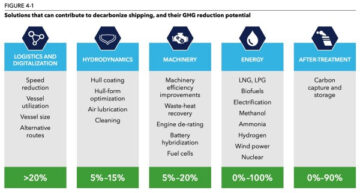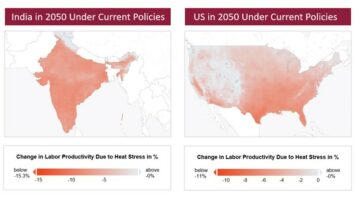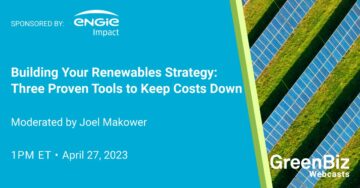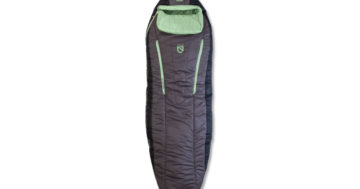Sweden’s H&M Group is investing in Bangladesh’s first offshore wind project, a utility-scale installation being developed by Copenhagen Infrastructure Partners. Bangladesh is home to many factories that stitch the retailer’s clothing.
H&M, along with Danish retailer Bestseller, will co-invest unspecified amounts as part of a $100 million corporate pool being organized by Copenhagen Infrastructure Partners and the Global Fashion Agenda, a nonprofit that encourages fashion brands to adopt climate-friendly business practices. Other companies are being encouraged to join the project, which could begin operations by 2028.
Fashion companies who have pledged an emissions reduction of at least 50 percent by 2030 and net zero by 2050, and that can put at least $10 million into the project, are eligible to participate, Ulrika Leverenz, head of green investment for H&M Group, told GreenBiz.
“For us, this is a great example of how a collaborative approach on sustainable financing solutions and policy work can go hand in hand to overcome industry-wide challenges,” said H&M Group CEO Helena Helmersson, when the deal was announced during COP28.
‘A pioneering effort’ in the fashion industry
An estimated 70 percent of fashion industry emissions come from upstream activities, including manufacturing, and many of those operations currently rely on coal, petroleum and gas for their electricity, according to Global Fashion Agenda.
Bangladesh accounts for close to 8 percent of global clothing exports, making it the third-largest exporter of these goods after China and the European Union. The project, with a planned capacity of about 500 megawatts, would be the first utility-scale offshore installation for Bangladesh. It aims to supply 40 percent of the country’s power by 2041. Once completed, the installation would cut the country’s annual emissions by a projected 725,000 metric tons, according to the developer.
“This is really a pioneering effort. While it’s become more common for other industries to take an approach that is more vertically integrated, the fashion industry doesn’t have that same history,” said Nicole Rycroft, founder and executive director of Canopy Planet, which collaborates with apparel companies on supply chain sustainability strategy.
Most fashion companies have some operational footprint in Bangladesh, said Rycroft. “What’s important is that this helps coal power be decommissioned,” she said. “It helps the grid at a larger level. This is a supply chain that is transforming in real-time.”
H&M is one of the world’s largest “fast fashion” brands, a term used to describe apparel that moves quickly from retail to production to meet fast-moving style trends. The company reported Scope 3 emissions of 5.65 million metric tons in its latest sustainability report, for 2022. (Scope 3 includes emissions from the company’s supply chain.) That was a 3 percent reduction from 2021. Its goal is to achieve a 56 percent reduction in Scope 3 emissions by 2030, based on a 2019 baseline; as of 2022, it had managed a 7 percent cut.
Copenhagen Infrastructure Partners, based in Denmark, is the largest dedicated fund focused on renewable energy projects — especially wind — in undeveloped “greenfield” areas; so far it has raised about $28.4 billion for these activities.
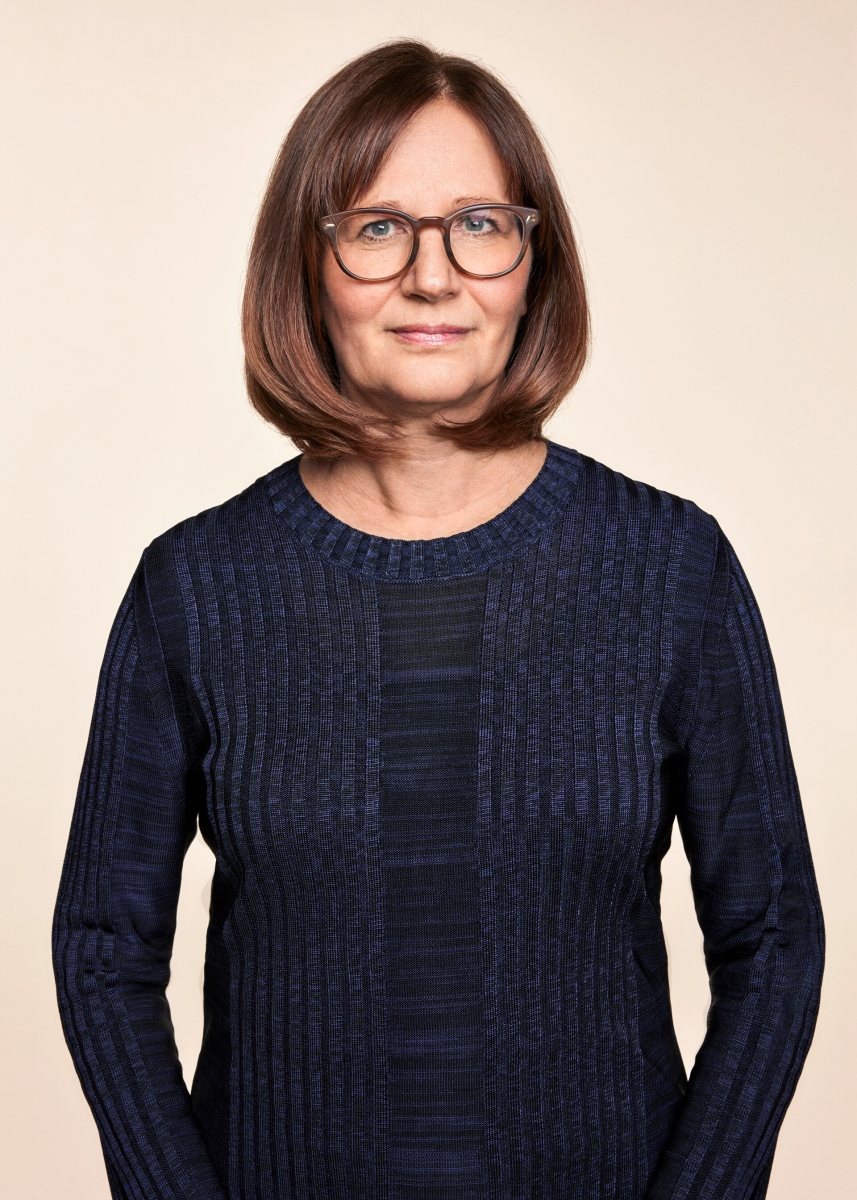
![]()
![]()
![]()
![]()
![]()
![]()
![]()
![]()
![]()
![]()
![]()
![]()
H&M steps up financing of supply chain sustainability
H&M’s planned wind farm investment builds on the company’s Green Fashion Initiative, which offers technical support and financing to suppliers who want to reduce their emissions. In late November, the company extended those efforts with the creation of a financing program in collaboration with Southeast Asia’s largest bank, DBS. The resource offers loans on favorable terms to suppliers who want to displace fossil fuels.
H&M has funded 17 projects as of January 2023, with a potential annual reduction of 190,000 metric tons annually, said Leverenz. About 50,000 metric tons are attributable directly to H&M’s production, she said.
One of H&M’s manufacturers in India, Raj Woollen, worked with H&M in early 2023 to finance the installation of solar panels, energy-efficient motors and water conservation technologies. The project was “a successful combination of expert energy assessment, close support in selecting the most suitable technology solutions, and an attractive financing model,” said Sumeet Nath, managing partner for Raj Woollen.
Another metric to watch: In 2022, 70 of the company’s suppliers used on-site coal boilers, down from 91 in 2021.
Any supplier in good standing can apply for H&M financing, Leverenz said. “We take into consideration the supplier’s financial situation, the innovation level of the technology, our business share in the unit, and the supplier’s own wish,” she said.
Its two priorities are “big projects with big suppliers aiming for maximum impact,” and those seeking to deploy innovative technology that might initially be risky but could provide longer-term benefits, Leverenz said.
- SEO Powered Content & PR Distribution. Get Amplified Today.
- PlatoData.Network Vertical Generative Ai. Empower Yourself. Access Here.
- PlatoAiStream. Web3 Intelligence. Knowledge Amplified. Access Here.
- PlatoESG. Carbon, CleanTech, Energy, Environment, Solar, Waste Management. Access Here.
- PlatoHealth. Biotech and Clinical Trials Intelligence. Access Here.
- Source: https://www.greenbiz.com/article/hm-funding-offshore-wind-bangladesh-get-garment-factories-fossil-fuels
- :has
- :is
- $10 million
- $100 million
- $UP
- 000
- 15%
- 17
- 2019
- 2021
- 2022
- 2023
- 2028
- 2030
- 2050
- 40
- 50
- 500
- 65
- 7
- 70
- 91
- a
- About
- According
- Accounts
- Achieve
- activities
- adopt
- After
- agenda
- Aiming
- aims
- along
- amounts
- amp
- an
- and
- annual
- Annually
- apparel
- Apply
- approach
- ARE
- areas
- AS
- Asia’s
- assessment
- At
- attractive
- Bangladesh
- Bank
- based
- Baseline
- BE
- become
- begin
- being
- benefits
- Big
- Billion
- brands
- builds
- business
- business practices
- but
- by
- CAN
- Canopy
- Capacity
- ceo
- chain
- challenges
- China
- click
- Close
- Clothing
- Coal
- collaborates
- collaboration
- collaborative
- combination
- come
- Common
- Companies
- company
- Company’s
- Completed
- CONSERVATION
- consideration
- cop28
- Copenhagen
- Corporate
- could
- country’s
- Currently
- Cut
- danish
- data
- DBS
- deal
- dedicated
- Denmark
- deploy
- describe
- developed
- Developer
- directly
- Director
- Doesn’t
- down
- during
- Early
- effort
- efforts
- electricity
- eligible
- Emissions
- encouraged
- encourages
- energy
- energy projects
- especially
- estimated
- Ether (ETH)
- European
- european union
- example
- executive
- Executive Director
- expert
- extended
- factories
- far
- farm
- Fashion
- fashion brands
- FAST
- fast-moving
- favorable
- finance
- financial
- financing
- First
- focused
- Footprint
- For
- fossil
- fossil fuels
- founder
- from
- from 2021
- fuels
- fund
- funded
- funding
- GAS
- get
- Global
- Go
- goal
- good
- goods
- great
- Green
- greenfield
- Grid
- Group
- H&M
- had
- hand
- Have
- head
- helps
- history
- Home
- How
- HTTPS
- Impact
- important
- in
- includes
- Including
- india
- industries
- industry
- Infrastructure
- initially
- Innovation
- innovative
- innovative technology
- installation
- integrated
- into
- investing
- investment
- IT
- ITS
- January
- join
- larger
- largest
- Late
- least
- Level
- Loans
- Making
- managed
- managing
- managing partner
- Manufacturers
- manufacturing
- many
- maximum
- Meet
- metric
- might
- million
- model
- more
- most
- Motors
- move
- moves
- net
- Nonprofit
- November
- of
- off
- Offers
- on
- once
- operational
- Operations
- Organized
- Other
- our
- Overcome
- own
- panels
- part
- participate
- partner
- partners
- percent
- Petroleum
- Pioneering
- planet
- planned
- plato
- Plato Data Intelligence
- PlatoData
- policy
- pool
- potential
- power
- practices
- presentation
- Production
- project
- projected
- projects
- provide
- put
- quickly
- raised
- real-time
- really
- reduce
- reduction
- rely
- Renewable
- renewable energy
- Reported
- resource
- retail
- retailer
- Risky
- s
- Said
- same
- scope
- seeking
- selecting
- Share
- she
- situation
- So
- so Far
- solar
- solar panels
- Solutions
- some
- southeast
- standing
- Steps
- Strategy
- style
- successful
- suitable
- supplier
- suppliers
- supply
- supply chain
- support
- Sustainability
- sustainable
- Take
- Technical
- technical support
- Technologies
- Technology
- term
- terms
- that
- The
- the world
- their
- These
- this
- those
- to
- told
- tons
- transforming
- Trends
- two
- union
- unit
- us
- used
- vertically
- want
- was
- Watch
- Water
- we
- when
- which
- while
- WHO
- will
- wind
- wish
- with
- Work
- worked
- world
- would
- zephyrnet
- zero




